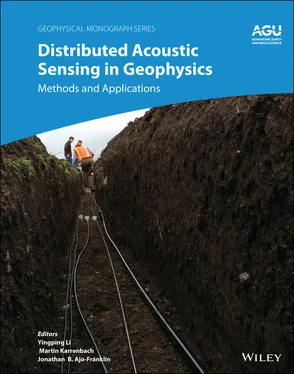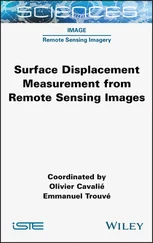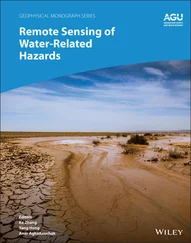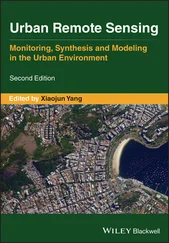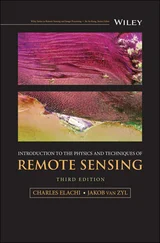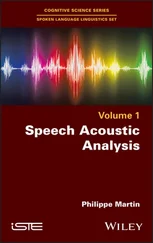This monograph will be the first comprehensive handbook for anyone interested in learning DAS principles and applications. We hope that the book will have a wide spectrum of readers – such as geophysicists, seismologists, geologists, and geoscientists; environmental scientists; and graduate and undergraduate students in geophysics and geoscience – with a common interest in DAS geophysical applications. This book also provides a common platform to the scientific and industry communities to share state‐of‐the‐art DAS technology.
Yingping Li
BlueSkyDas (formerly Shell), USA
Martin Karrenbach
OptaSense Inc. (A LUNA Company), USA
Jonathan B. Ajo‐Franklin
Rice University and Lawrence Berkeley National Laboratory, USA
Part I Distributed Acoustic Sensing (DAS)Concept, Principle, and Measurements
1 High Definition Seismic and Microseismic Data Acquisition Using Distributed and Engineered Fiber Optic Acoustic Sensors
Sergey Shatalin, Tom Parker, and Mahmoud Farhadiroushan
Silixa Ltd. Elstree, UK
The distributed acoustic sensor (DAS) offers a new versatile tool for geophysical applications. The system allows seismic signals to be recorded along tens of kilometers of optical fiber and over a wide frequency range. In this chapter we introduce the concept of DAS and derive an expression for the system response by modeling the superposition of the coherent backscatter fields along the fiber. Expressions are derived for converting the optical phase to strain rate and equivalent particle motion. We discuss DAS signal processing and denoising methods to deal with the random nature of the Rayleigh scatter signal and to further improve dynamic range and sensitivity. Next we consider DAS parameters such as spatial resolution, gauge length and directionality in comparison with geophones. We present some field trial results that demonstrate the benefits of the DAS for vertical seismic profiling and microseismic detection. Finally we discuss the fundamental sensitivity limit of DAS. We consider how the scattering properties of conventional fiber can be engineered to deliver a step‐change DAS performance, beyond that of conventional geophones and seismometers. Theoretical findings are illustrated by the field data examples, including low‐frequency strain monitoring and microseismic detection.
1.1. DISTRIBUTED ACOUSTIC SENSOR (DAS) PRINCIPLES AND MEASUREMENTS
In this chapter, we consider the principles and performance of distributed and precision engineered fiber optic acoustic sensors for geophysical applications (Hartog et al., 2013; Parker et al., 2014). In particular, system parameters such as spatial resolution, dynamic range, sensitivity, and directionality are examined for seismic and microseismic measurements.
In this first section, we consider the measurement principle of DAS, which uses naturally occurring random scatter centers along the fiber. We use the term acoustics in a broad physical sense here, like any propagation of mechanical disturbances (Lewis, 1985). We review different DAS systems, including direct‐intensity‐detection and phase‐detection schemes, where we derive a mathematical relationship for optical phase recovery. Our aim is to explain the nature of the distributed acoustic signal and describe the natural limitations for DAS measurements. Such information is needed to optimize DAS recording parameters for geophysical applications. Examples of DAS parameter optimization for seismic applications can be found in Section 1.2. We also present some examples of active and passive seismic field data in Sections 1.2and 1.3.
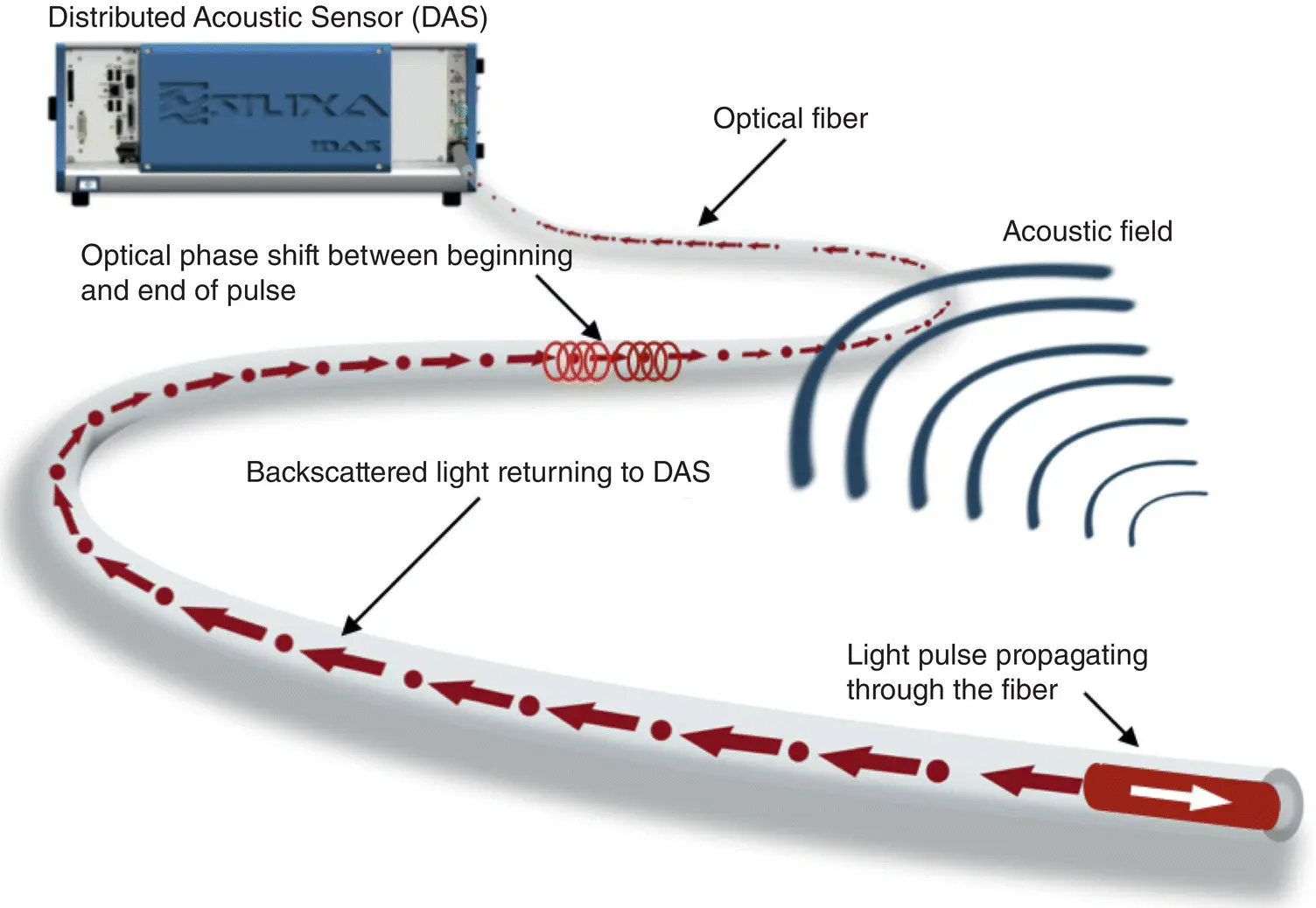
Figure 1.1 Operation principle of distributed acoustic sensing.
The principle of distributed sensing is based on optical time domain reflectometry (OTDR), as indicated in Figure 1.1. When a laser pulse travels down an optical fiber, a tiny portion of the light is naturally scattered through Rayleigh, Raman (Dakin & Culshaw, 1989), and Brillouin (Parker et al., 1998) interactions and returns to the optoelectronic sensor unit. The measurement location can be determined from the time taken for the laser pulse to travel down the sensing fiber, and the backscatter light to return to the optoelectronic sensor unit.
Figure 1.1shows the basic principle of DAS, where the sensing fiber is excited with a coherent laser pulse and the Rayleigh backscattered interference along the fiber is detected and digitized. An acoustic wave elongates the fiber and so changes the optical phase shift between backscatter components from the leading and trailing parts of the optical pulse. As a result of interference, the intensity of the returning light changes from pulse to pulse. It is also possible to determine the optical phase to recover acoustic phase so there are two classes of DAS, based on the detection of: (i) optical intensity and (ii) optical phase. With the intensity DAS technique, also referred to as coherent optical time domain reflectometry (COTDR), a perturbation along the fiber is detected by measuring the changes in the backscatter intensity from pulse to pulse, as indicated in Figure 1.2. COTDR has been used for the detection of temperature changes (Rathod et al., 1994; Shatalin et al., 1991) and acoustic vibration (Juškaitis et al., 1992; Posey et al., 2000), along multi‐kilometer fiber cables (Juarez et al., 2005; Shatalin et al., 1998).
The principle of the COTDR system can be understood by analyzing the radiation generated by localized scatter centers (Taylor & Lee, 1993). Here, the coherent scattered light can be represented as the result of two reflections with random amplitude and phase. When the fiber is strained, the backscatter intensity varies in accordance with the strain rate ( Figure 1.2), but with an unpredictable amplitude and phase, which changes along the fiber (Shatalin et al., 1998). As a result, the signal cannot be effectively accumulated for multiple seismic pulses: the fiber response to strain is highly nonlinear, and therefore the changes in amplitude and phase cannot be directly matched to the original strain affecting the fiber. The next section discusses ways of addressing this. Therefore, COTDR systems are not that useful for seismic applications.
With the phase DAS technique, the method for optical phase analysis is a key feature of system design. All techniques rely on phase modulation between the beginning and end of a pulse, which can be considered as a double pulse. Such modulation can be performed before or after light propagation over optical fiber, as indicated in Figure 1.3. We have limited our discussion to schemas that have been patented and implemented in practice. In one scheme, which is similar to that used for multiplexed interferometer sensors (Dakin, 1990), two laser pulses with different frequencies may be sent down the fiber ( Figure 1.3a). In this case, the acoustic phase shift will be transferred to a frequency difference and can be measured in the photocurrent radio frequency domain.
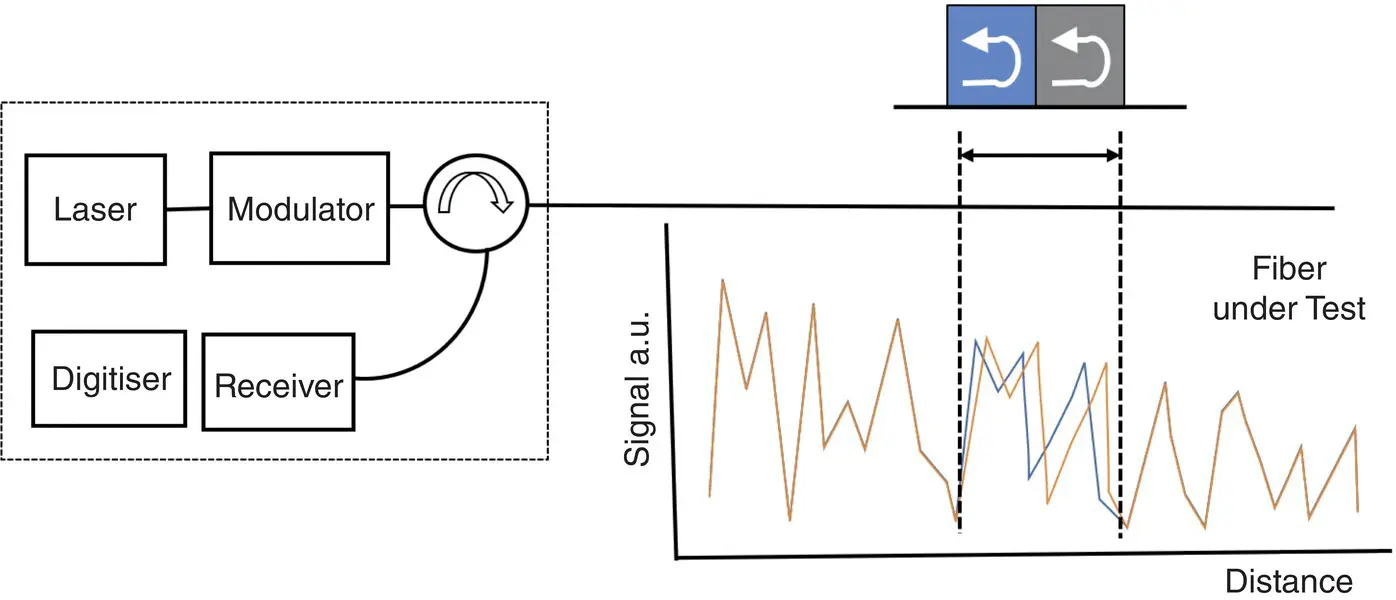
Figure 1.2 COTDR.
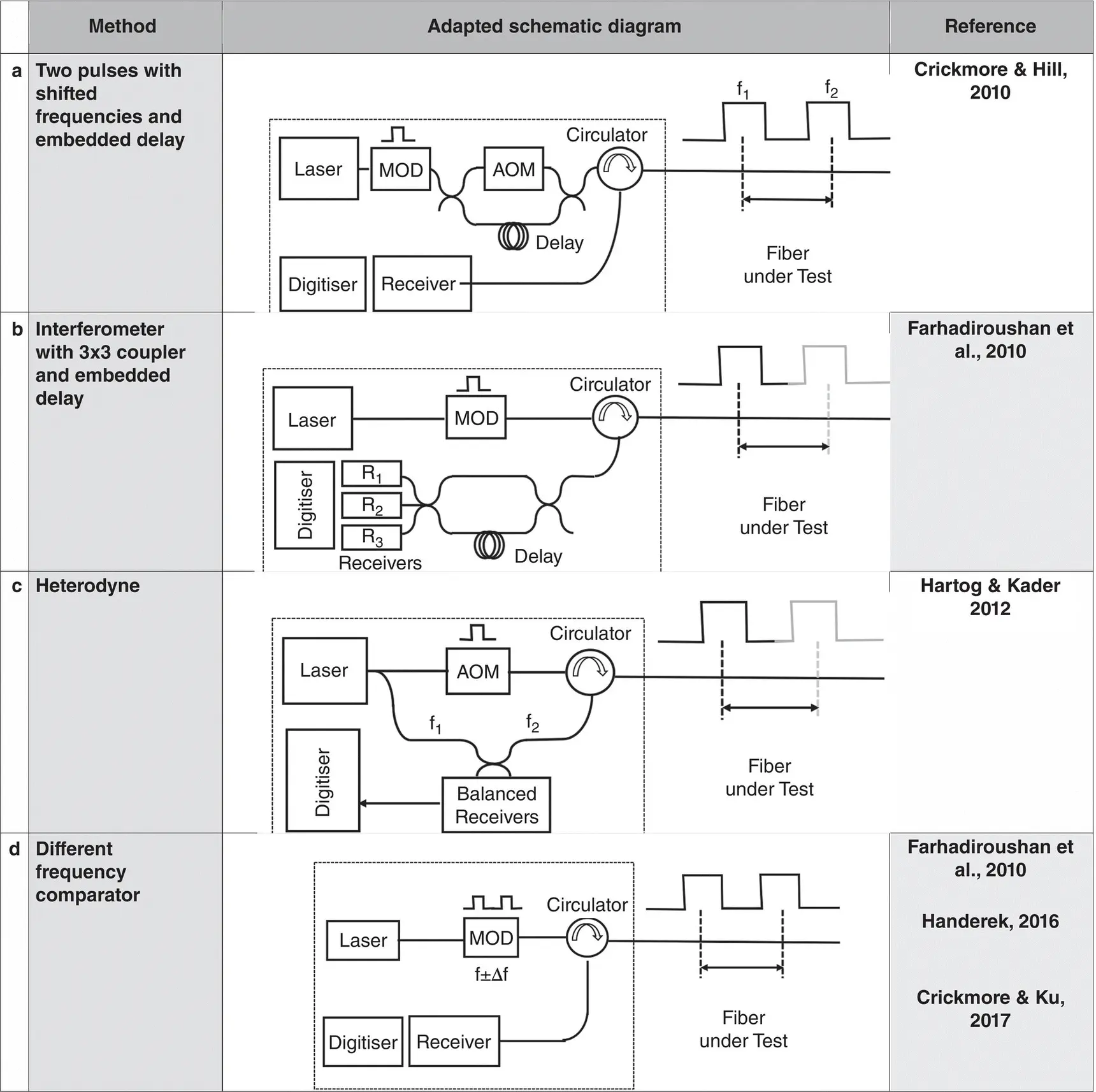
Figure 1.3 DAS schemas: MOD—intensity and frequency modulator; AOM—acousto‐optic modulator.
Читать дальше
